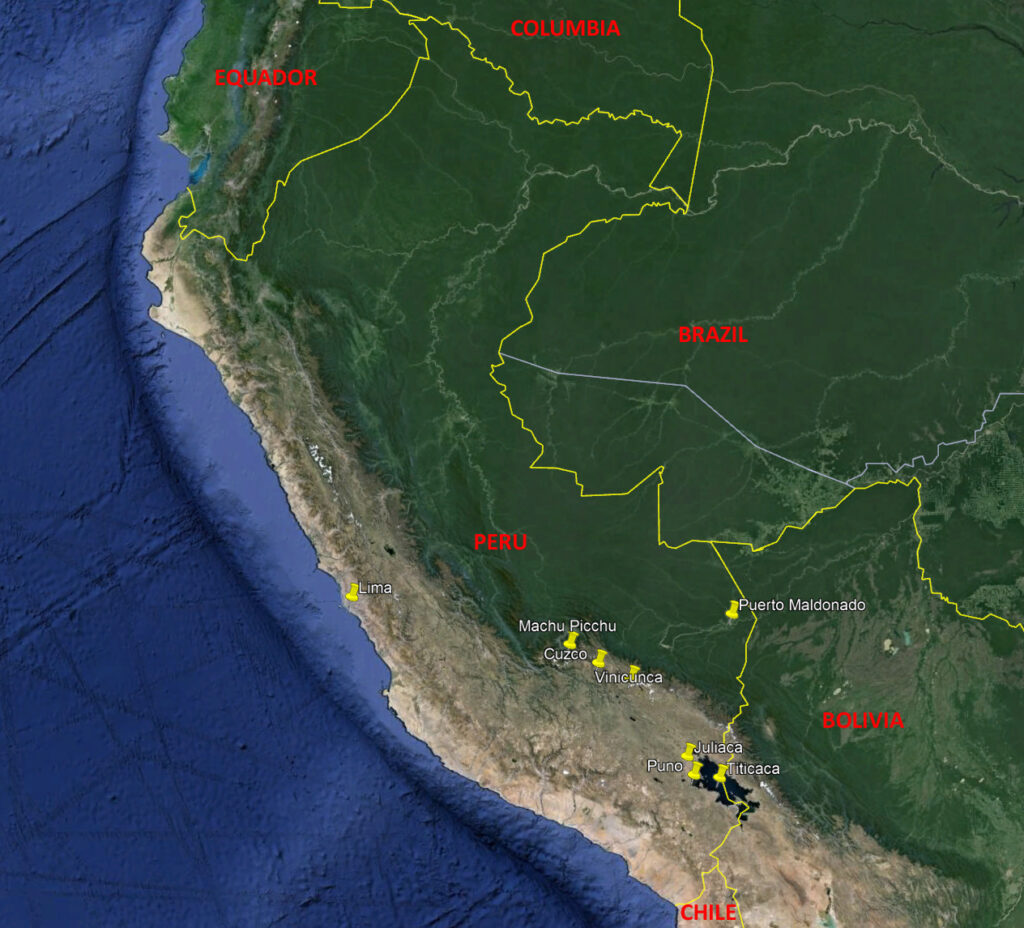
The Republic of Peru is a diverse country with habitats ranging from the arid plains of the Pacific coast in the west, to the peaks of the Andes Mountains extending from the north to the southeast of the country, to the tropical Amazon basin rainforest in the east. Peru has a population of over 32 million, with about 11 million in its capital city Lima, and is the 19th largest country in the world, and the third largest in South America.
Peruvian territory was home to several cultures during the ancient and medieval periods, and has one of the longest histories of civilization of any country, tracing its heritage back to the 10th millennium BCE.
Notable pre-colonial cultures and civilizations include the Caral–Supe civilization (the earliest civilization in the Americas and considered one of the cradles of civilization),
the Nazca culture, the Wari and Tiwanaku empires, the Kingdom of Cusco, and the Inca Empire, the largest known state in the pre-Columbian Americas. The Spanish Empire conquered the region in the 16th century and Charles V established a viceroyalty with the official name of the Kingdom of Peru that encompassed most of its South American territories, with its capital in Lima.
Peru formally proclaimed independence from Spain in 1821. The sovereign state of Peru is a representative democratic republic divided into 25 regions. Its main economic activities include mining, manufacturing, agriculture and fishing, along with other growing sectors such as telecommunications and biotechnology. The main spoken language is Spanish
